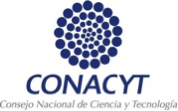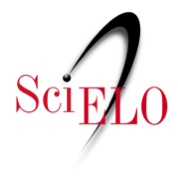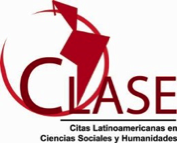The Restorer as Artist-Interpreter
DOI:
https://doi.org/10.30763/Intervencion.Rev1_Art4Keywords:
conservation theory, subjectivity, restoration, interpretation, professionalAbstract
Conservation work is compared to that carried out by performing artists, since they both deliver to an audience the interpretation of the work by other artists. It emphasizes on the difference between hand skills, scientific and technological knowledge, in relation to the sensitivity and ability required for the interpretation of an object during its conservation. Through examples, it highlights the enormous cultural responsibility of the conservator through the interpretation of the message that the restored object should communicate, questioning the teaching of interpretation skills in professional conservation training, as well as its curricular implications. Cleaning operations are used as an illustrative example, in order to discuss the concept of patina. This article concludes that conservation cannot only be judged as scientifically objective or technically skilled since it is obvious that any interpretation implies subjectivity: a topic that surely has not been consciously and responsibly examined in Mexico.
Downloads
References
Brandi, Cesare
“The Cleaning of Pictures in Relation to Patina, Varnish
and Glazes”, Burlington Magazine 91 (556): 183-89.
Principios de la teoría de la restauración, México, UNAM.
Caple, Chris
Conservation Skills: Judgment, Method and Decision
Making, Londres, Routledge.
Cimadevilla Cervera, Ilse y Carolusa González Tirado
“La teoría de la restauración aplicada en la intervención de objetos metálicos”, Imprimatura. Revista de Restauración 12:25-33.
Geertz, Clifford
The Interpretation of Cultures, Nueva York, Basic Books.
González Tirado, Carolusa
“Importancia de la selección de los métodos de limpieza
para metales arqueológicos”, Correo del Restaurador 4, documento electrónico disponible en http://www.conservacionyrestauracion.inah.gob.mx/html/Publindice.html, consultado en noviembre de 2009.
“La miniatura como objeto integral: materiales y técnicas”, en Santuarios de lo íntimo, retratos en miniatura y relicarios, la colección del Museo Soumaya, 38-61, México, Carso.
Melucco Vaccaro, Alessandra
a “Introduction to Part III: The Emergence of Modern Conservation Theory”, en Nicholas Stanley-Price, M. Kirby Talley Jr. y Alessandra Melucco Vaccaro (eds.), Historical and Philosophical Issues in the Conservation of Cultural Heritage, Los Ángeles, The Getty Conservation Institute, 202-211.
b “Introduction to Part VII: The Idea of Patina”, en Nicholas Stanley-Price, M. Kirby Talley Jr. y Alessandra Melucco Vaccaro (eds.), Historical and Philosophical Issues in the Conservation of Cultural Heritage, Los Ángeles, The Getty Conservation Institute, 366-371.
Muñoz Viñas, Salvador
Teoría contemporánea de la restauración, Madrid, Síntesis.
Partridge, Loren, Fabrizio Mancinelli y Gianluigi Colalucci
El Juicio Final: la obra y su restauración, Madrid, Nerea.
Philippot, Paul
“La notion de patine et le nettoyage des peintures”, Bulletin del Institute Royal du Patrimoine Artistique 9:138-146.
Restauración: filosofía, criterios, pautas. Documentos
de trabajo del Primer Seminario Regional Latinoamericano de
Conservación y Restauración, México, INAH-ICCROM.
“Restoration from the Perspective of the Humanities”, en Nicholas Stanley-Price, M. Kirby Talley Jr. y Alessandra Melucco Vaccaro (eds.), Historical and Philosophical Issues in the Conservation of Cultural Heritage, Los Ángeles, The Getty Conservation Institute, 216-229.
Shanks, Michael y Christopher Tilley
Reconstructing Archaeology: Theory and Practice, Londres, Routledge.
Van de Wetering, Ernst
“The Surface of Objects and Museum Style”, en Nicholas Stanley-Price, M. Kirby Talley Jr. y Alessandra Melucco Vaccaro (eds.), Historical and Philosophical Issues in the Conservation of Cultural Heritage, Los Ángeles, The Getty Conservation Institute, 415-421.
Weil, Phoebe Dent
“A Review of the History and Practice of Patination”, Proceedings of a Seminar on Corrosion and Metal Artifacts: A Dialogue between Conservators and Archaeologists and Corrosion Scientists held at the National Bureau of Standards, Gaithersburg, National Bureau of Standards, 77-92.
Additional Files
Published
How to Cite
Issue
Section
License
Copyright (c) 2014 Intervención, Revista Internacional de Conservación, Restauración y Museología

This work is licensed under a Creative Commons Attribution-NonCommercial 4.0 International License.

Atribución-NoComercial 4.0 Internacional
https://creativecommons.org/licenses/by-nc/4.0/deed.es
Usted es libre de:
- Compartir — copiar y redistribuir el material en cualquier medio o formato
- Adaptar — remezclar, transformar y construir a partir del material
Bajo los siguientes términos:
-
Atribución — Usted debe dar crédito de manera adecuada, brindar un enlace a la licencia, e indicar si se han realizado cambios. Puede hacerlo en cualquier forma razonable, pero no de forma tal que sugiera que usted o su uso tienen el apoyo de la licenciante.
-
No Comercial — Usted no puede hacer uso del material con propósitos comerciales.




















